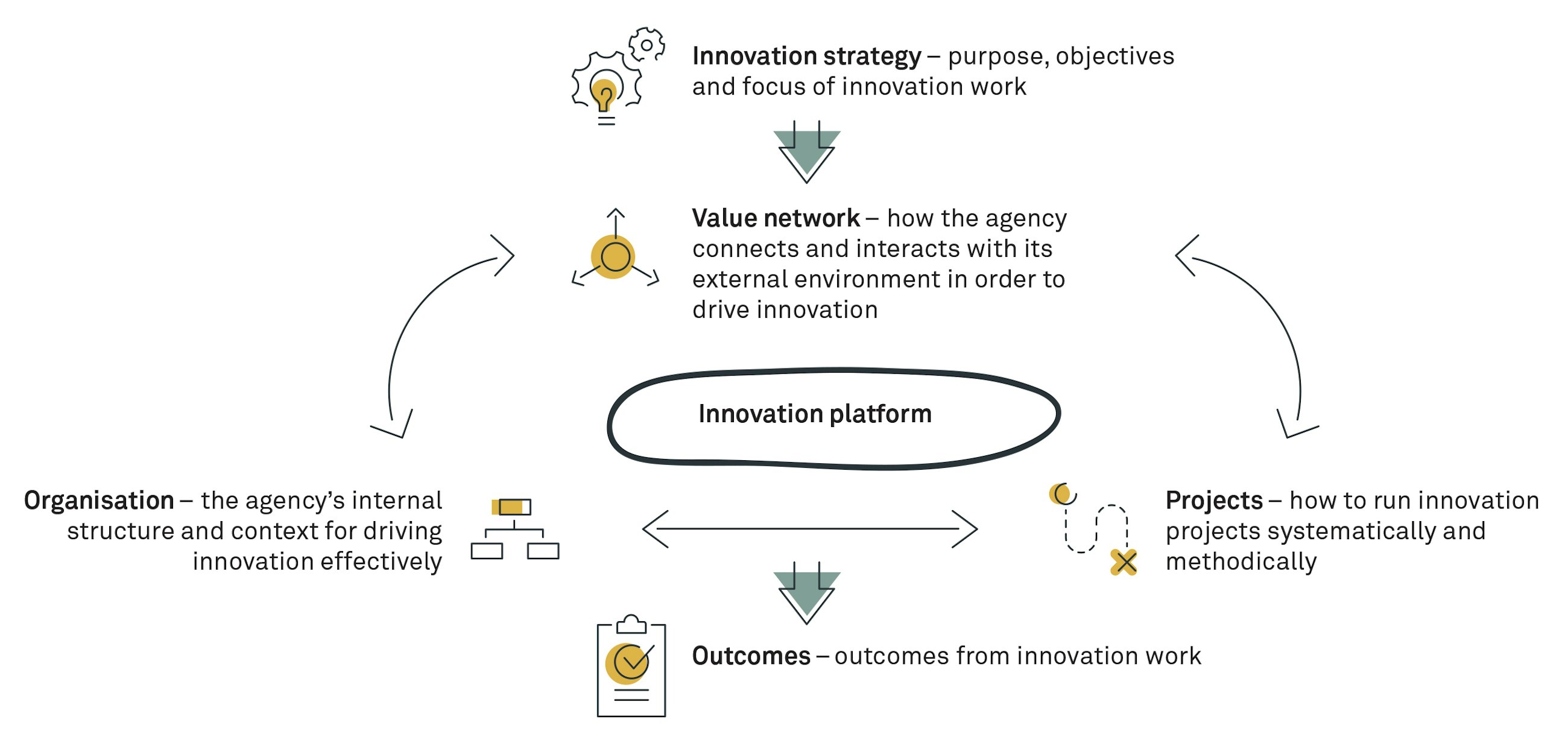–what sets those that succeed apart, and what are the factors in their success?
9 November 2021
Introduction to the study
Innovation can be defined as something new that is put into effect and creates value. Traditionally, innovation has been equated with new technologies and products, but in recent decades the term has been broadened to encompass everything from new services and business models, new work processes and ways of organising and managing to largescale solutions to complex societal problems. This also means that the values generated by innovation are more than just financial and that the benefits are often only apparent at a much later stage.
In order to shed some light on this, Vinnova (the Swedish innovation agency) has funded this study of Swedish public agencies. It follows up the study undertaken in 2017 (“Innovation and renewal in 112 Swedish public agencies – what sets those that succeed apart, and what are the factors in their success?”, available on the Vinnova and Implement Consulting Group websites). The studies were carried out by consultants from Implement Consulting Group (Roger Lundegård and Jonas Winqvist) and researchers at the KTH Royal Institute of Technology (Sofia Ritzén and Susanne Nilsson). The findings provide fresh insights into the current situation and what distinguishes successful from unsuccessful agencies in their efforts to innovate.
The study covers 102 Swedish public agencies, and the data relating to each agency results from a self-assessment, with each agency being asked to use a 6-point scale to indicate how well various statements applied to them. Vinnova contacted the Director-General (DG) of each agency, who was then asked to designate staff to respond to the questionnaire. Those selected needed to have a good strategic overview of the agency’s overall approach and capacity for innovation work from an overall management perspective.
Innovation in theory and practice – public agencies in particular
Research has shown that the following are needed in order to build innovative capacity in a business:
- A focus and a stated ambition in respect of innovation work, i.e. a management-initiated innovation strategy. This is needed to clarify for staff in the organisation where/in which areas more innovative solutions are needed and why, in order to achieve the organisation’s goals;
- An organised body of individuals dedicated to innovation work. Individuals need to be able to act agilely within the organisation when new opportunities for innovation arise and also to work strategically and long-term on identifying innovations and putting them into effect;
- Work processes and methods that support coordination and collaboration. This is needed to enable groups of very diverse individuals to collaborate internally and with other organisations with the aim of identifying, evaluating, selecting, implementing and creating benefits from new innovation opportunities;
- Development of innovation-friendly values and norms within the organisation. This is needed to encourage experimentation, risk-taking, creativity, perseverance and continuous learning, not least from innovation activities and projects that do not go according to plan.
Framework for reviewing and analysing innovative capacity
The framework used in this study is based on current research in the field as well as proven experience and includes five different areas, each of which contains different themes that describe them in more detail:
Report
Innovation capability in 102 Swedish agencies
– what sets those that succeed apart, and what are the factors in their success






